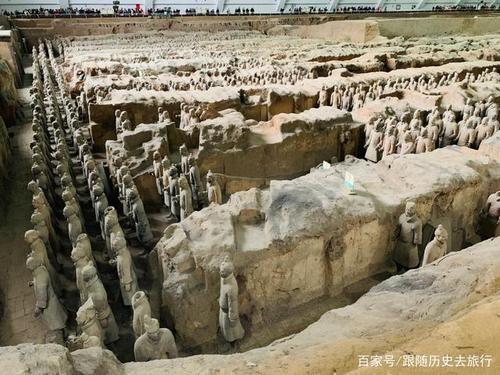
Can Cosmic Rays Unlock the Secrets of the Terracotta Army's Tomb?
For more than 2,000 years, the secrets of the mausoleum of Qin Shi Huang, China's first emperor, were guarded by his Terracotta Army. But thanks to cutting-edge cosmic ray technology, archaeologists could soon discover what treasures were buried alongside him.
The Mystery of Qin Shi Huang's Tomb
Qin Shi Huang, the emperor who unified China in the 3rd century BC, left behind a legacy as grand as it is mysterious. His magnificent tomb complex, discovered in 1974, is home to the awe-inspiring Terracotta Army – thousands of life-sized clay soldiers, each unique, standing guard over their emperor for eternity.
While the discovery of the Terracotta Army revolutionized our understanding of ancient China, the emperor's actual burial chamber remains unexcavated. Historical texts describe a tomb of unimaginable riches, filled with precious artifacts, intricate astronomical maps, and flowing rivers of mercury – a testament to the emperor's pursuit of immortality.
However, the potential presence of mercury, along with the tomb's fragile structure and the risk of triggering booby traps described in ancient texts, has made excavation a risky endeavor. This is where cosmic rays come in.
Cosmic Rays: A Window into the Past
Cosmic rays are high-energy particles that bombard Earth from outer space. These particles can penetrate solid objects, including rock and soil, and interact with the atoms inside, producing secondary particles called muons. By tracking the trajectory and number of muons passing through an object, scientists can create a density image of its internal structure, similar to an X-ray but on a much larger scale.
This technique, called muon tomography or muography, has been successfully employed in various fields, from mapping the interior of volcanoes to investigating the pyramids of Giza.
Unveiling the Emperor's Tomb
The use of muography presents a unique, non-invasive way to explore Qin Shi Huang's tomb. By placing muon detectors around the burial mound, scientists can map the tomb's internal structure, identify hidden chambers, and analyze the density of different materials. This will help determine the presence of mercury, map the layout of the tomb, and potentially identify areas of interest for future, minimally invasive explorations.
Challenges and Expectations
While promising, the application of muography to the emperor's tomb comes with its own set of challenges. The sheer size of the mound, coupled with the potential depth of the burial chamber and the density of surrounding materials, requires highly sensitive detectors and sophisticated data analysis techniques.
Despite the challenges, the potential rewards are immense. Muography offers a unique opportunity to peer into one of history's greatest mysteries without disturbing the emperor's final resting place. It has the potential to reveal not only the treasures buried within but also shed light on the beliefs, technology, and artistry of ancient China.
Q&A
Q1: How long will it take to map the emperor's tomb using muography?
A1: The time required for data collection and analysis depends on various factors like the size of the tomb, detector sensitivity, and environmental conditions. It could range from several months to a few years.
Q2: Is there a risk that muons will damage the artifacts within the tomb?
A2: Muons are a naturally occurring phenomenon, and the levels used in muography are far too low to cause any damage to the tomb or its contents.
Q3: Will the use of muography lead to the eventual excavation of the tomb?
A3: The data obtained from muography will be crucial in guiding future decisions regarding the tomb. However, the primary objective is to study and preserve this historical treasure, and any decision regarding excavation will be taken with utmost care and respect for its historical and cultural significance.